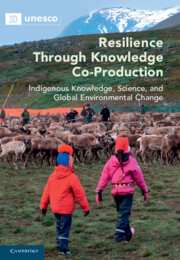 Resilience through Knowledge Co-Production
Resilience through Knowledge Co-Production from Part I - From Practice to Principles
Published online by Cambridge University Press: 02 June 2022
The research on the ecological restoration of reindeer lichen pastures described in this chapter relates the dynamic and complex endeavour of different actors through the coproduction of knowledge. First initiated by forest managers and forest ecologists, it soon became transdisciplinary when Sami reindeer herders collaborated, combining science and Indigenous knowledge to solve a problem in which neither were sufficient by themselves. However, the complex challenge of restoring reindeer lichen pastures in productive forest lands required an interdisciplinary and intersubjective understanding of the various partners’ worldviews and knowledge. This was materialized by fostering a collaborative learning process through experimentation, i.e., controlled field experiments that were jointly designed, established and surveyed. The results of these experiments and experiences enabled the exploration of innovative pathways for ecological restoration and to refine and share common goals.
To save this book to your Kindle, first ensure no-reply@cambridge.org is added to your Approved Personal Document E-mail List under your Personal Document Settings on the Manage Your Content and Devices page of your Amazon account. Then enter the ‘name’ part of your Kindle email address below. Find out more about saving to your Kindle.
Note you can select to save to either the @free.kindle.com or @kindle.com variations. ‘@free.kindle.com’ emails are free but can only be saved to your device when it is connected to wi-fi. ‘@kindle.com’ emails can be delivered even when you are not connected to wi-fi, but note that service fees apply.
Find out more about the Kindle Personal Document Service.
To save content items to your account, please confirm that you agree to abide by our usage policies. If this is the first time you use this feature, you will be asked to authorise Cambridge Core to connect with your account. Find out more about saving content to Dropbox.
To save content items to your account, please confirm that you agree to abide by our usage policies. If this is the first time you use this feature, you will be asked to authorise Cambridge Core to connect with your account. Find out more about saving content to Google Drive.